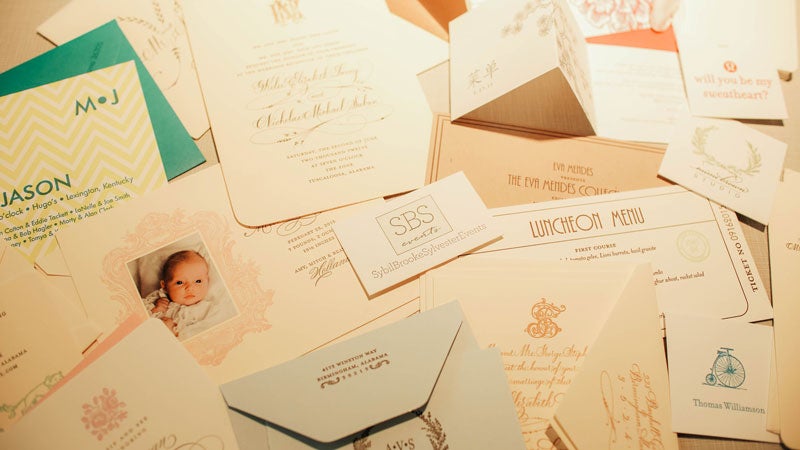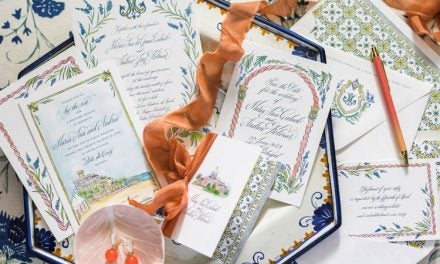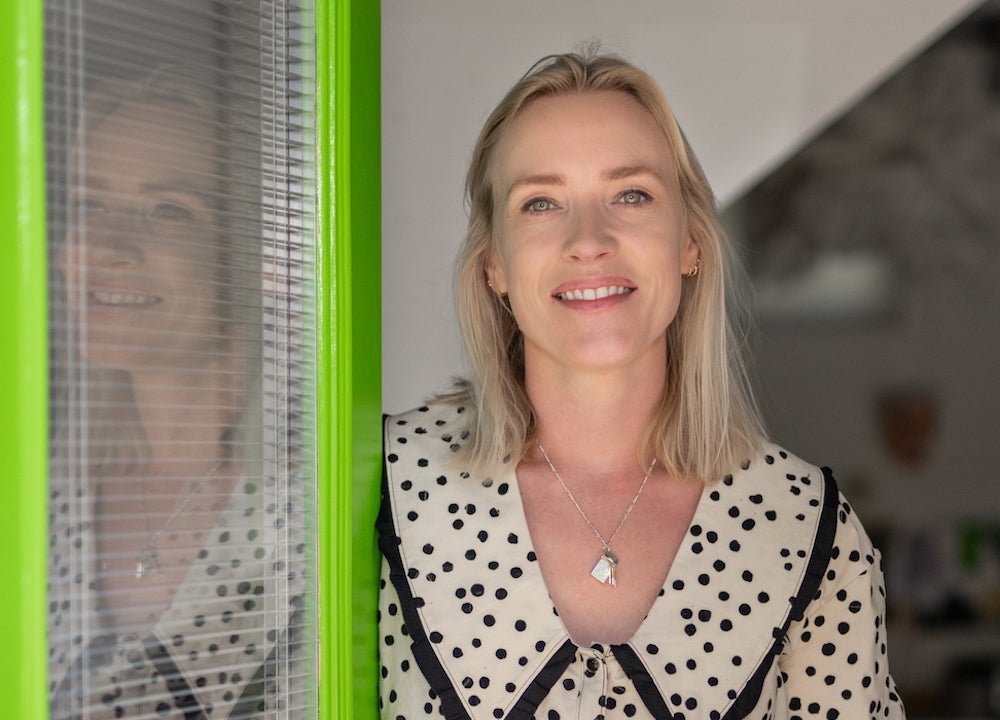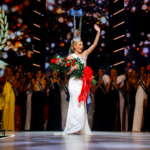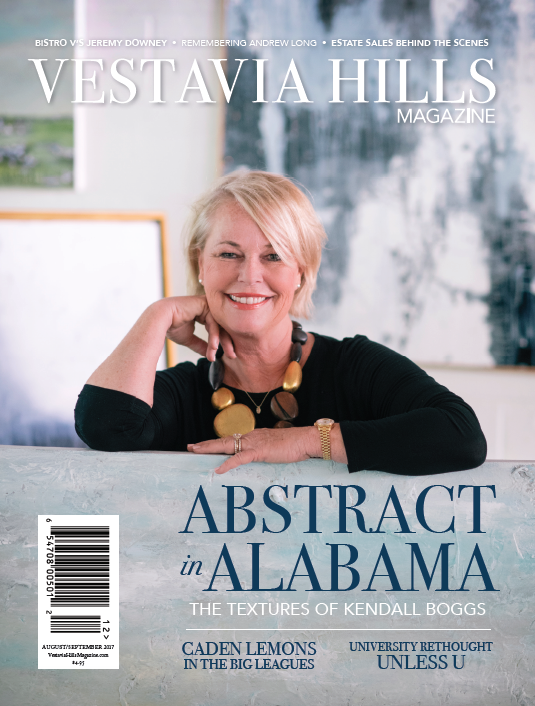Unlike many Vestavia houses, Jenny Barry’s sits next to creek that rushes with so much water it often attracts kayakers, but perhaps its most unique feature is one you can’t see from the road. Just inside her basement door sits a 1,200-pound Vandercook printing press—a weight so colossal that she had to hire a company that moves safes for banks to transport it to her basement studio from a warehouse downtown where she used to store it. “I wish I had a counter on it,” she says. “It’s been 20 years (since I got it), so there are hundreds of thousands of impressions on it now.”
Over the years she’s crafted wedding invitations, birth announcements, party invitations and a next generation’s wedding invitations for her clients on the 2.5-by-7-foot press, which began its life in 1940 in Chicago, six decades before Jenny first saw it. The day we interviewed her for this article, she was finishing up miniature wedding program booklets she’d printed and tied with silk ribbon—in what’s become her signature look of her Press Charming brand that no doubt many guests have turned into keepsakes. “To this day the first time I pull one off the press, I get really excited,” she says.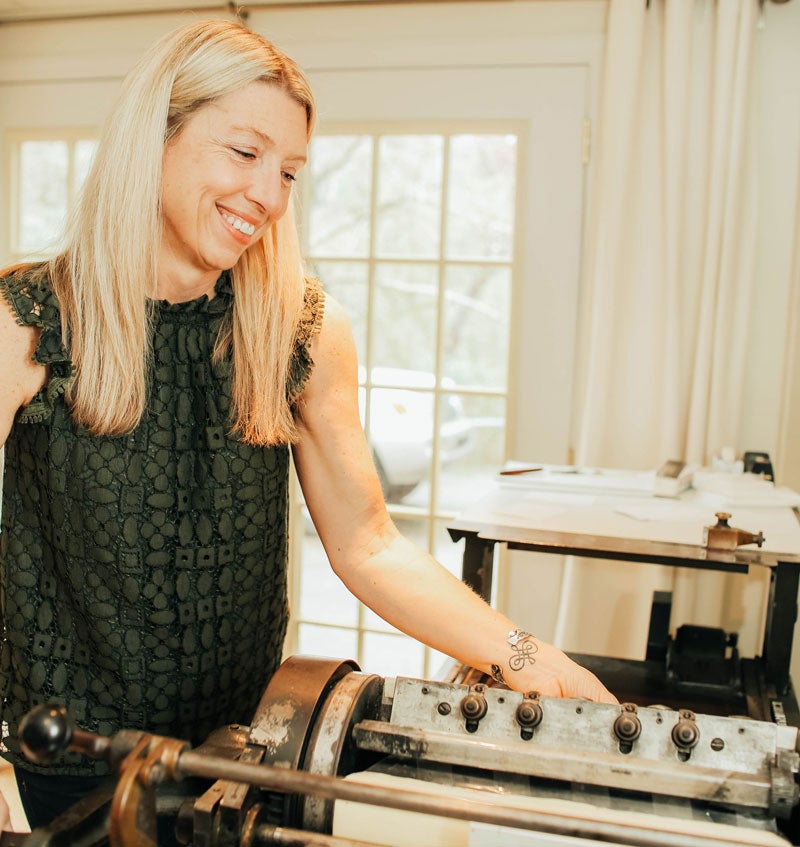
At her desk adjacent to the press, Jenny flips through the boxes of samples she’s completed over the years: a clean and classy architect’s 10-year anniversary celebration, colorful kids’ stationery, dainty trifold birth announcements. She stops at a wedding suite for an event set in Cashiers, North Carolina, that boasts greens and browns on soft white paper. Several others in her box are printed on double thick paper, a trend her clients keep selecting, and one Christmas card is on a luscious handmade paper with deckled edges from Spain that is so soft that it’s extra receptive to the imprint of the press. Tags for honey and chutney jars sit in her collection alongside stacks of business cards with all forms of personality.
Over the past two decades, Jenny has worked with event planners from Dothan to New York City, rolling imprints onto wedding paper suites for both of Nick Saban’s children, Kristen and Nicholas, and menus and place cards for events for Gwyneth Paltrow. She’s been Venmo-ed a payment from actress Molly Sims and printed 60th birthday invitations for the wife of John Cleese of Monty Python fame. But most of her clients are simply people who value a hand-crafted invitation.
Lots of the rectangular papers in Jenny’s collection boast traditional designs, but she likes to switch it up with whimsical designs, or go for a modern, clean look too. Unique color splashes come into play with hand painting and watercolor baths, creating one-of-a-kind designs.
It’s the same collection she brings out for clients to try to get a feel for what they gravitate to so she can capture their particular style in her design for them. “They get what they want versus going to online vendors and picking something,” she says, noting often people want to combine the styles they see, which you can’t do online. Hers is a more personal process that yields a unique product she hopes will set the tone for the event as guests pull it out of its envelope.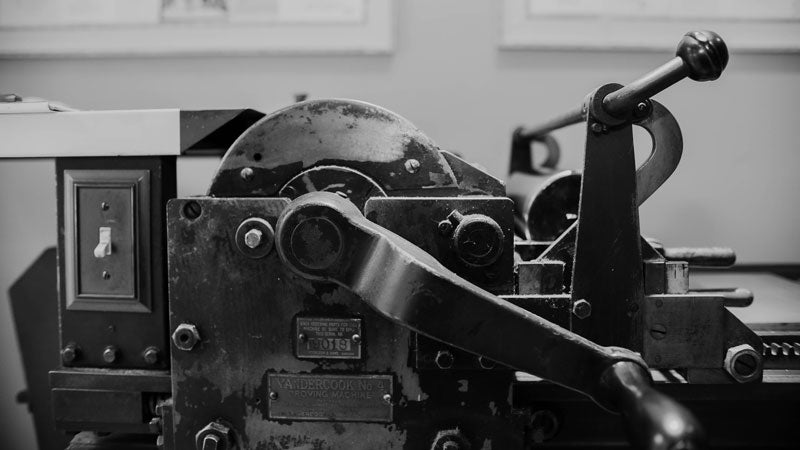
You might not be surprised to learn that Jenny has a Master of Fine Arts in Book Arts from the University of Alabama, where she delved into bookbinding, paper making, letterpress and more, but she always thought that would just be for fun and then she’d put her undergraduate business degree to use. As it turns out, though, she has found a way to use both skill sets.
When she got married a few years after finishing her MFA, Jenny decided to print her own invitations and hunted down a Vandercook press in Indianapolis that she transported back to Birmingham in a U-Haul. She got the rollers redone, set it up and printed her invitations. After the wedding, friends would ask who printed them, and then she started printing business cards—and the business took off from there.
Although she has done letterpress work full time in the past, these days Jenny, a runner aspiring to finish her first full marathon by the end of 2019, works about 20 hours on her press and spends another 30 working for Lululemon—coupling her passions for creativity and fitness.
What she didn’t know when she finished her MFA was that her timing sidestepping into the letterpress business was perfect as the art form was making a comeback in the early 2000s. After all it’s “cutting edge 15th century technology,” she jokes. Presses like her Vandercook were what altered history when the Bible was printed for the first time, instead of hand scripted at a price only the wealthy could afford, making printed materials accessible to the masses. With the advent of slick offset printing technologies though, letterpress went out of fashion in the late ‘60s. “Then it was frowned upon if you could see the impression in the paper,” Jenny explains, “but now that’s what people want—to have something handmade where you can see and feel the impression.”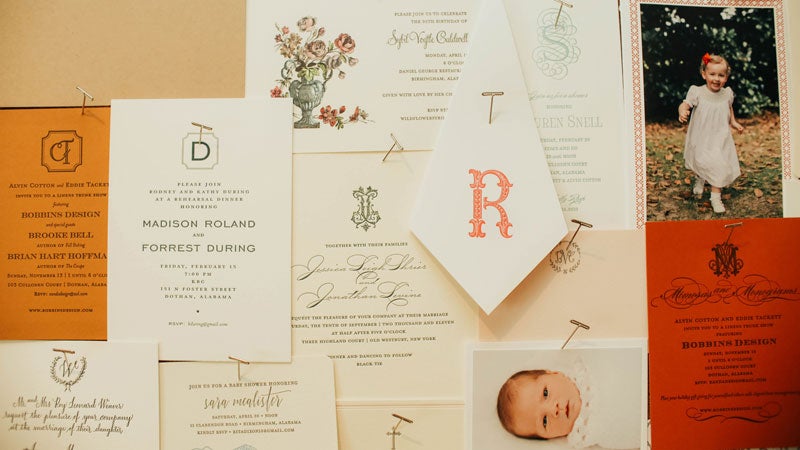
In the age of emails and texts, the personalization of letterpress now is back in vogue. “I tell people if they want something that is flawless from one copy to the next and to be identical, then letterpress is not for you,” Jenny says.
The process starts with a conversation with her client about themes and colors. From there she designs with fonts and art on her computer just as a graphic designer would, only the final approved design is then printed onto a plate sensitive to UV light that will later roll onto paper on her Vandercook. Before that time comes though, Jenny orders paper from vendors and mixes ink herself with her Pantone guide.
Perhaps her strongest eye in the design process is for color. Jenny’s designer friend tells her she can see colors and how they work together well, creating combinations people might not think to put together. Browns were on-trend in the past, but these days charcoal grey is king. She tends to favor greens and blues, and mauve has been more popular lately, both in her printing work and in the merchandise displays she sets up at Lululemon. Each color she uses requires separate printing plate and a separate pass through the printer, so the more colors, the more complex the printing job.
The most laborious part, she says, is setting up the plates and ink. From there it’s just hand cranking papers through, over and over and over again—a process so repetitive that Jenny has worn a hole in the carpet next to the press from walking back and forth so many times over the years.
She often outsources other crafts for a project like calligraphy and engraving (which is raised on the paper, whereas letterpress is impressed), coordinating a beautiful page of an end product.
She can add custom envelope liners or postage stamps to the package too. At Christmas her daughter Mallory, a VHHS student, often helps her attach photos to cards.
Invitation etiquette has loosened up in recent years, Jenny says, but most of her clients want to follow it to a tee. Jenny will often advise them on what Emily Post says, stepping in to let them know that the wording, “request the honor of your presence” is only appropriate for a house of worship but that “request the pleasure of your company” is fitting for other settings. Inserts should be stacked with from smallest to largest, top to bottom, and tissue shouldn’t be used for letterpress since its original purpose was to blot ink from other forms of printing.
No matter what wording gets printed, Jenny finds each project that comes off her press equally exhilarating, even 20 years into her venture. “Each one is like a little piece of art,” she says. “It’s all been hand cranked, and each one is going to look just a little different.”

